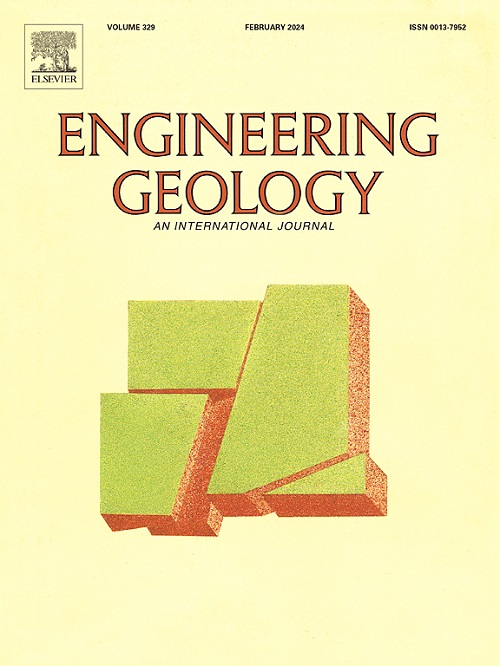Localised fluidisation in a giant loess landslide
IF 8.4
1区 工程技术
Q1 ENGINEERING, GEOLOGICAL
引用次数: 0
Abstract
On 1 September 2022, a giant loess landslide occurred in Huzhu Tu Autonomous County, Qinghai Province, China. This catastrophic event brought to light a unique loess fluidisation phenomenon. In specific parts of the landslide, the loess completely transformed into a viscous, fluid-like state, whereas other parts showed a deep-seated slide that retained their structural integrity. In this case, loess with different sliding patterns exhibited varying levels of mobility and destructive potential. Based on the field investigation, electrical resistivity tomography was employed to investigate the groundwater condition of the slope. Subsequently, ring-shear tests were carried out to examine the mechanical properties of the sliding zone loess under different saturation degrees and its response to rainfall as a triggering factor. The results indicate that the natural water content in the original slope was unevenly distributed, influenced by local terrain and groundwater runoff. Following the initial slide caused by cumulative rainfall, the overlying sliding material with high degree of saturation was likely to fluidise due to the increase in excess porewater pressure caused by continued shearing, ultimately resulting in flow-like movement features. In contrast, in areas with a deeper groundwater table, the initial shear could only be sustained over a short distance. This study reveals a mechanism of multiple movement patterns that may coexist in giant loess landslides.
巨型黄土滑坡中的局部流化现象
2022年9月1日,中国青海省虎渚土族自治县发生巨大的黄土滑坡。这一灾难性事件揭示了一种独特的黄土流化现象。在滑坡的特定部分,黄土完全变成了粘性的、流体状的状态,而其他部分则显示出深层滑动,保留了其结构的完整性。在这种情况下,不同滑动模式的黄土表现出不同程度的流动性和破坏潜力。在现场调查的基础上,采用电阻率层析成像技术对边坡的地下水状况进行了调查。通过环剪试验,研究了不同饱和度下滑带黄土的力学特性及其对降雨的响应。结果表明,受当地地形和地下水径流的影响,原坡面天然含水量分布不均匀。在累积降雨引起的初始滑动之后,上覆的高饱和度滑动物质可能由于持续剪切引起的超孔隙水压力的增加而流化,最终形成流状运动特征。相比之下,在地下水位较深的地区,初始剪切只能持续很短的距离。本研究揭示了巨型黄土滑坡多种运动模式共存的机理。
本文章由计算机程序翻译,如有差异,请以英文原文为准。
求助全文
约1分钟内获得全文
求助全文
来源期刊

Engineering Geology
地学-地球科学综合
CiteScore
13.70
自引率
12.20%
发文量
327
审稿时长
5.6 months
期刊介绍:
Engineering Geology, an international interdisciplinary journal, serves as a bridge between earth sciences and engineering, focusing on geological and geotechnical engineering. It welcomes studies with relevance to engineering, environmental concerns, and safety, catering to engineering geologists with backgrounds in geology or civil/mining engineering. Topics include applied geomorphology, structural geology, geophysics, geochemistry, environmental geology, hydrogeology, land use planning, natural hazards, remote sensing, soil and rock mechanics, and applied geotechnical engineering. The journal provides a platform for research at the intersection of geology and engineering disciplines.
 求助内容:
求助内容: 应助结果提醒方式:
应助结果提醒方式:


